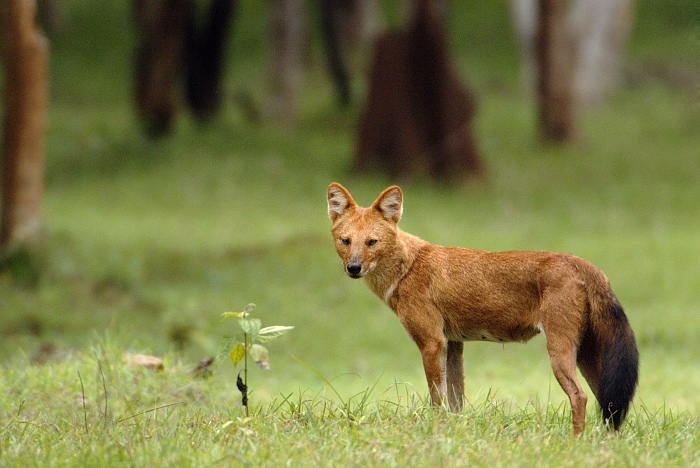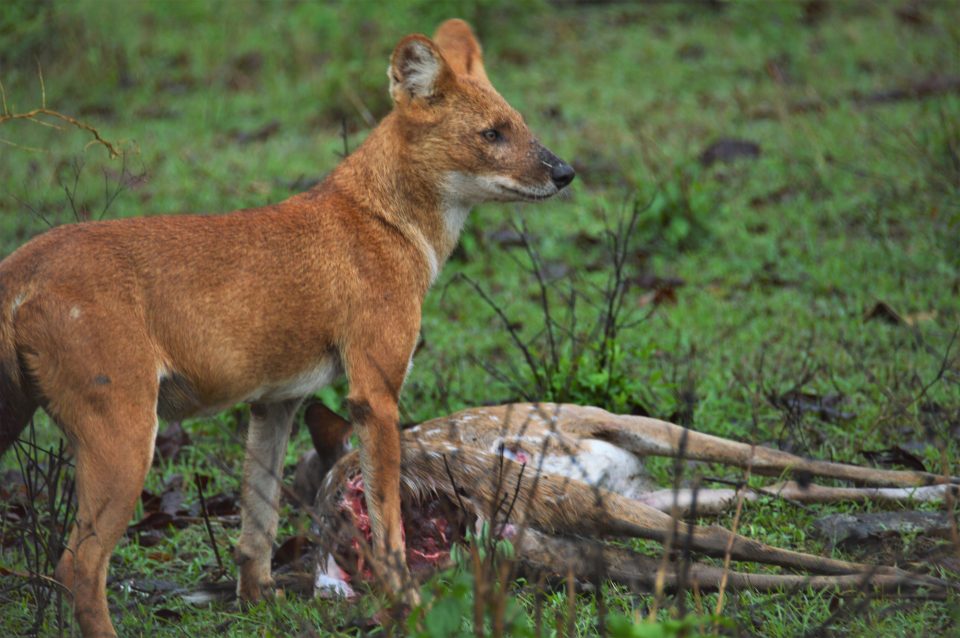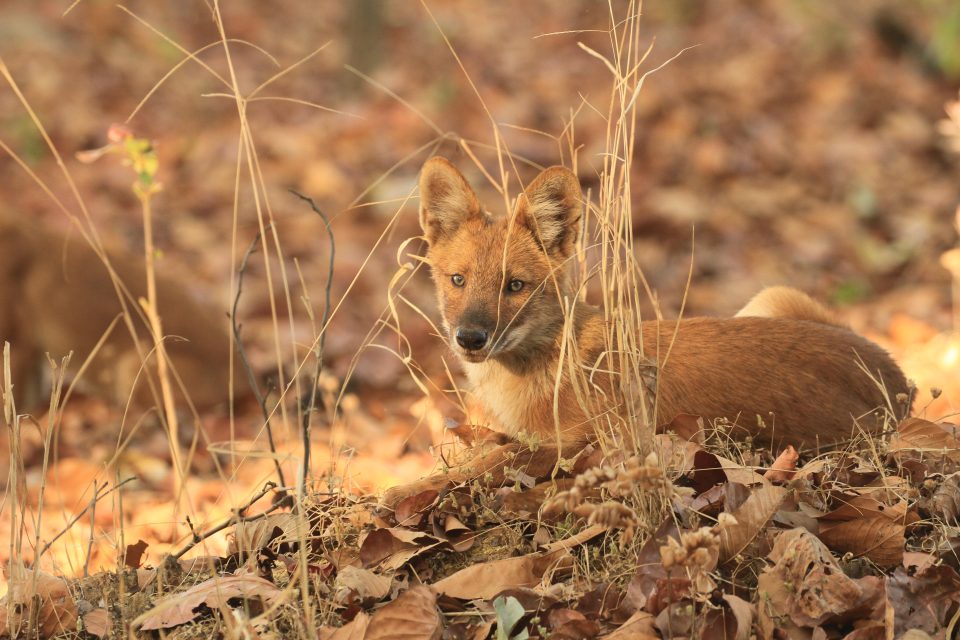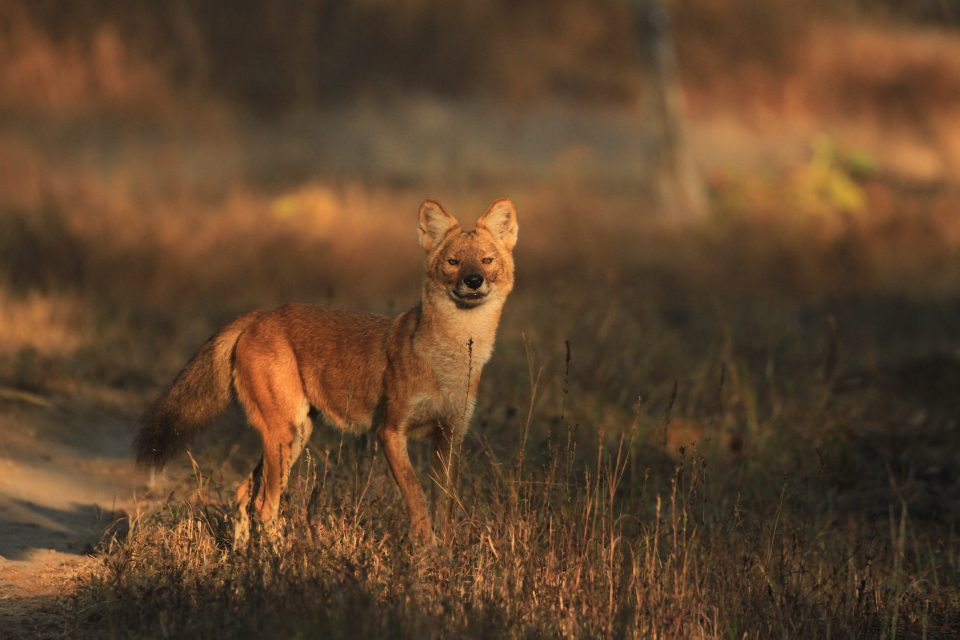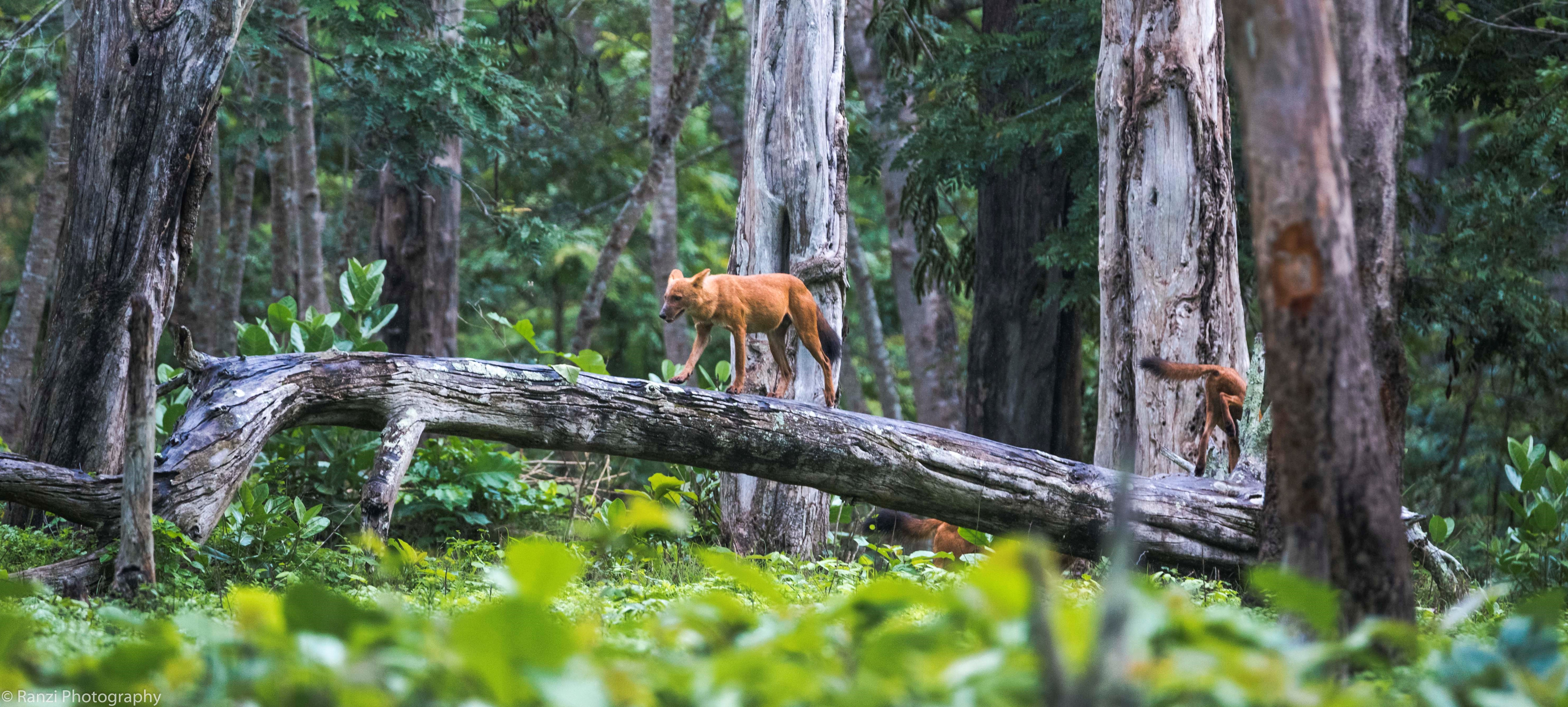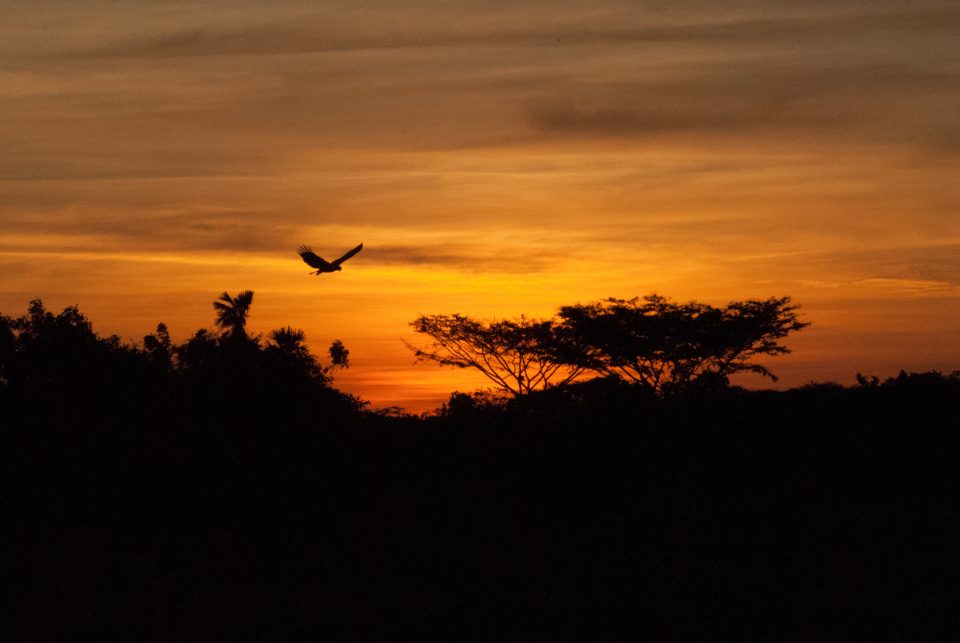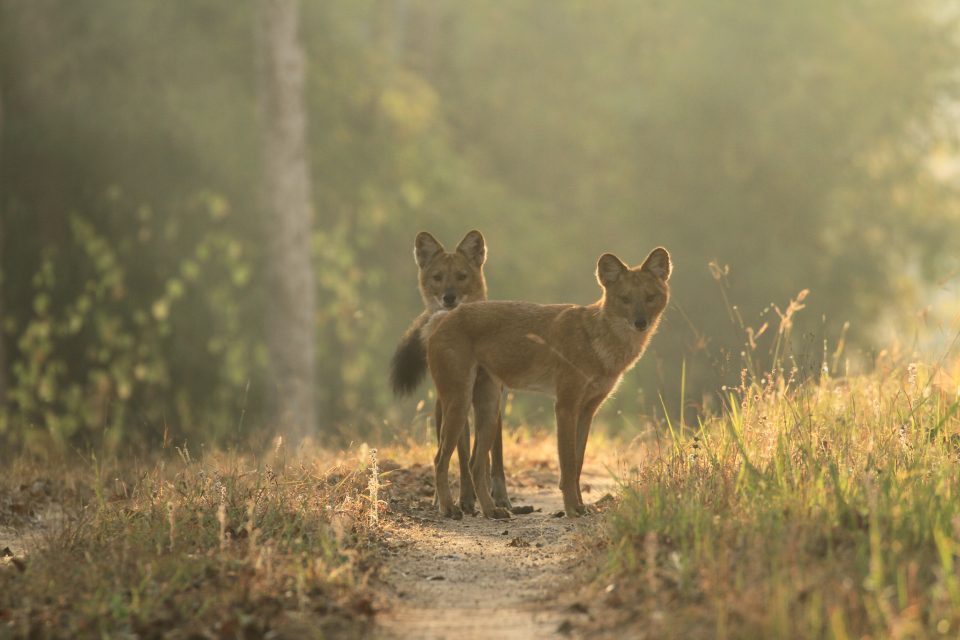In Pursuit of the Forgotten Dog of Asia
Baluran
Dawn breaks over a wide and acacia-studded savanna. In their wallows, the mud slathered buffalos blink sleepily at our passing, and the air is alive with the purr of zebra doves. Squint, and this could be a scene from East Africa, but the dawn-blushed slopes of the surrounding volcanoes gaze down across a new day in Indonesia.
This is Balaran National Park in East Java; 700 km2 of evergreen woodland that cloaks the broken crater of the extinct Balaran Volcano. A verdant mat sweeping down to the ocean, with the sleeping peaks of Bali off in the southern haze. The park is one of the last refuges for several globally threatened animals, including the Endangered Javan leopard, and shy herds of smartly marked banteng (a species of wild cattle, now extinct across much of its Asian range). But our target is none of these, for we are looking for the little known, but highly threatened dhole, or Asian wild dog.
An overlooked species with shrinking populations
With a historic range that mirrored that of the tiger, dholes were once found across a vast area from India, Tibet and Mongolia to Russia, Korea and Southeast Asia. Although considerably smaller than their big cat cousins, dholes are equally formidable predators, working in packs like wolves to bring down large-bodied prey. Inevitably, their hunting prowess has led to persecution over vast areas of their former strongholds. As with the tiger, dhole range has contracted greatly, with populations now restricted to the Indian subcontinent, small pockets in Southeast Asia and some remote outposts in China.
Both tigers and dholes are classified as endangered, but here the similarities end. Lacking the tiger’s prominence in human consciousness and culture, the dhole is a forgotten species, being demonized (if it is thought of at all) as vermin, and a target for extermination. Unlike their glamorous feline cousins, dholes have received little research attention, with just a handful of biologists working to understand their ecology and needs.
One aspect of their lives that remains almost unknown is the role that infectious disease might play in their survival. It is likely that dholes share many of the pathogens that circulate in domestic dogs. Experience with other social canines, such as African wild dogs or Ethiopian wolves, suggests that outbreaks of rabies or canine distemper virus could threaten populations with extinction.
The search for dholes...
In a landscape that was once home to the now extinct Javan tiger, Balaran represents one of the dhole’s last refuges. Having scoured the savanna grasses in vain, seeing nothing but clumped herds of nervous rusa deer and shining emerald green peafowl, we withdrew to try our luck in the surrounding acacia thickets. As a non-native, these low trees choke out the natural woodland over large portions of the park. The densely woven canopy starves the forest floor of sunlight, creating a sparsely vegetated understory. This seemed, perhaps ironically, more promising; enough cover for ambush, yet space sufficient for a pursuit predator.
In the shadows the air hung still, insulated from the brisk Pacific winds that tugged at the clacking fronds of dry Pandanus palms above us. Fording a parched river bed, musty with the fermenting stink of monkey scat, we disturbed a mixed troop of macaques and langurs. Voicing sharp notes of alarm, the monkeys seemed distracted, shooting quick glances at us, then off into the forest.
Exhilarating and unexpected sighting
At once a bark-like yowl, a flash of burnished red between the trees. First one, then two auburn red bodies took off, half seen and unseen. Moving quickly in pursuit we hurried after them, trying for a better look. Then a third, off to our right, running at speed in the open, with tail aloft, its black tip waving like a flag. Pausing in a sun-washed glade the dhole looked back momentarily, fixing us with a primeval glare, and then turned and was gone, leaving us breathless and jubilant.
Later, with the sun having set and the image of these enigmatic predators seared in our brains, we walked back across the savanna, now chirping with nightjars (listen here). Out through the darkness a ring of glimmering towns laid siege to the reserve, a sobering reminder of the proximity of civilization and all the threats it embodies. Only by understanding the needs and threats faced by this forgotten carnivore can we hope to ensure its survival. For without our attention, we may lose it before most of us ever knew it existed.
Martin Gilbert is actively fundraising to support field studies to address gaps in our understanding of wild carnivore ecology and disease threats — critical to effective conservation.
For more information on Baluran and dholes:


